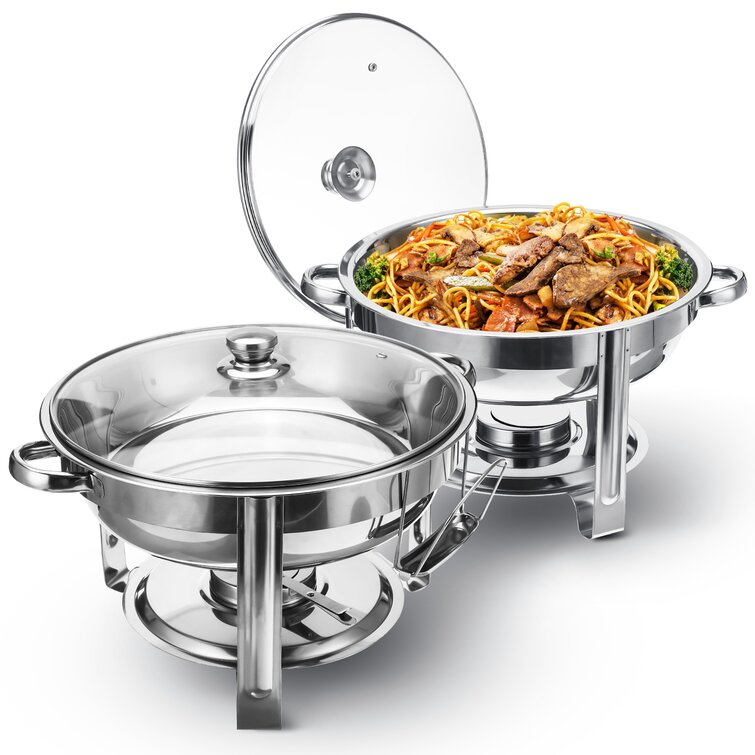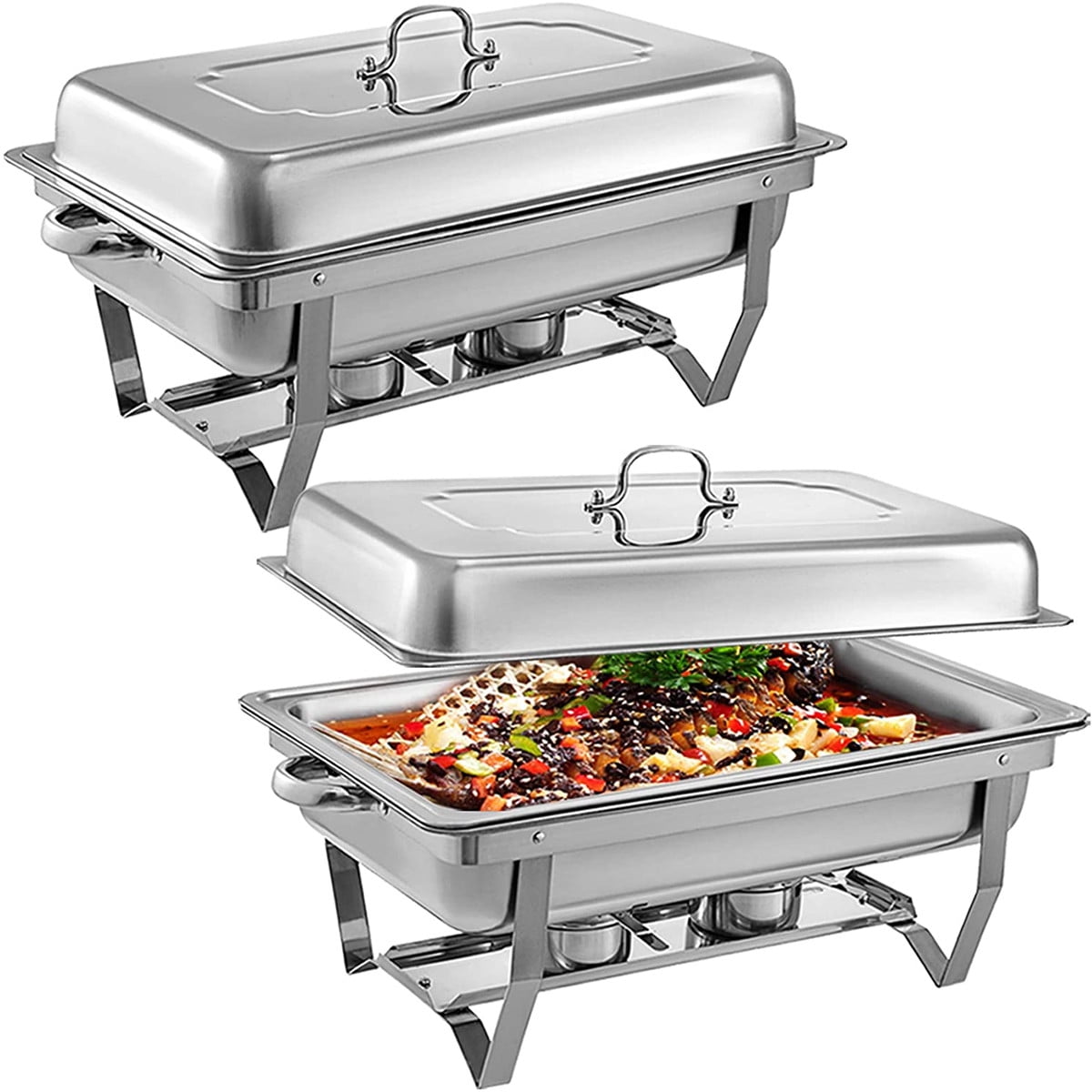Buffet food warmers are indispensable tools in the culinary world, ensuring that your delectable dishes remain warm and inviting throughout your dining experience. Whether you’re hosting a grand banquet or a cozy family gathering, these ingenious devices play a crucial role in maintaining the quality and safety of your food.
From chafing dishes to induction warmers and heat lamps, this guide will delve into the diverse range of buffet food warmers available, exploring their unique features, benefits, and considerations. We’ll also provide best practices for their use, ensuring that your food stays at its optimal temperature while adhering to the highest standards of food safety.
Buffet Food Warmer Types
Buffet food warmers are essential for keeping food at a safe and enjoyable temperature during catered events. There are several types of buffet food warmers available, each with its own benefits and drawbacks.
The most common type of buffet food warmer is the chafing dish. Chafing dishes are typically made of stainless steel and have a water pan that sits beneath the food pan. The water pan is filled with hot water, which heats the food pan and keeps the food warm.
Chafing dishes are relatively inexpensive and easy to use, but they can be bulky and difficult to transport.
Induction warmers are another popular type of buffet food warmer. Induction warmers use electromagnetic energy to create heat, which is then transferred to the food pan. Induction warmers are very efficient and can heat food quickly and evenly. However, they can be more expensive than chafing dishes, and they require special cookware that is compatible with induction heating.
Heat lamps are a third type of buffet food warmer. Heat lamps emit infrared radiation, which heats the food directly. Heat lamps are very effective at keeping food warm, but they can also dry out food if they are not used properly.
Choosing the Right Buffet Food Warmer
When choosing a buffet food warmer, it is important to consider the following factors:
- The type of food that will be served.
- The number of guests that will be attending the event.
- The budget.
- The availability of space.
Features and Considerations: Buffet Food Warmers
When selecting a buffet food warmer, several crucial features merit consideration. These include:
Capacity
- The capacity of a buffet food warmer determines the quantity of food it can accommodate.
- Consider the number of guests and the volume of food you anticipate serving to choose a warmer with an appropriate capacity.
Temperature Control
- Precise temperature control is essential to maintain food at safe and optimal temperatures.
- Look for warmers with adjustable temperature settings to accommodate different food types.
Durability
- Buffet food warmers are subjected to frequent use and require durable construction.
- Choose warmers made from sturdy materials like stainless steel or aluminum that can withstand wear and tear.
Material, Buffet food warmers
- The material of the warmer influences its durability, heat retention, and ease of cleaning.
- Stainless steel is a popular choice for its corrosion resistance and ease of sanitization.
Energy Efficiency
- Energy-efficient warmers can help reduce operating costs.
- Consider warmers with insulation or energy-saving features to minimize energy consumption.
Ease of Cleaning
- Regular cleaning is crucial to maintain hygiene and prevent food contamination.
- Choose warmers with removable parts and smooth surfaces for easy cleaning and sanitization.
Best Practices for Use

Utilizing buffet food warmers effectively is crucial for maintaining food quality and safety. Adhering to these guidelines ensures optimal performance and minimizes the risk of foodborne illnesses.
Proper placement is essential, ensuring food warmers are positioned in high-traffic areas with ample space for guests to navigate. Temperature settings should be carefully adjusted to maintain food at safe serving temperatures, typically between 140°F (60°C) and 165°F (74°C).
Food Handling
- Regularly check food temperatures to ensure they remain within the safe range.
- Avoid overcrowding food warmers, as this can hinder even heat distribution.
- Use separate utensils for each dish to prevent cross-contamination.
- Discard any food that has been held for more than two hours at room temperature.
Food Safety
- Thoroughly clean and sanitize food warmers before and after each use.
- Follow proper food handling techniques to prevent the spread of bacteria.
- Monitor food warmers regularly to ensure they are functioning correctly.
- If any food appears spoiled or unsafe, discard it immediately.
Design and Aesthetics
Buffet food warmers are not just functional equipment; they can also contribute to the overall ambiance of your buffet setup. When choosing a food warmer, consider its aesthetic appeal to ensure it complements the style and theme of your event.
From sleek and modern to rustic and charming, there’s a wide range of designs available to match your preferences. For a contemporary look, opt for warmers with clean lines and metallic finishes. If you’re aiming for a more traditional aesthetic, consider warmers made of wood or ceramic with intricate carvings or patterns.
Shape and Color
The shape and color of your food warmer can also impact its visual appeal. Rectangular warmers are a versatile choice, while round or oval warmers can add a touch of elegance. As for color, neutral tones like black, white, or gray blend seamlessly with any decor.
If you want to add a pop of color, choose warmers in vibrant hues like red, blue, or green.
Examples of Warmers for Different Settings
To illustrate the aesthetic considerations, here are examples of food warmers that complement different buffet settings:
- Modern Banquet Hall:Sleek, rectangular warmers with brushed stainless steel finish and LED lighting.
- Rustic Wedding Reception:Wooden warmers with intricate carvings and a distressed finish.
- Tropical Beach Party:Oval warmers in bright colors like turquoise or coral, with palm tree motifs.
Cost and Value

Buffet food warmers vary in cost depending on their type, size, and features. Induction warmers tend to be more expensive than traditional warmers, while portable warmers are generally more affordable. It’s important to consider the value proposition of each type, taking into account factors such as durability, efficiency, and return on investment.
Durability
- Induction warmers are known for their durability, as they have no moving parts that can wear out.
- Traditional warmers, on the other hand, may require more maintenance and repairs over time.
- Portable warmers are often made of lightweight materials, which may make them more susceptible to damage.
Efficiency
- Induction warmers are highly efficient, as they transfer heat directly to the food without wasting energy.
- Traditional warmers can be less efficient, as they rely on indirect heat transfer.
- Portable warmers may also be less efficient, as they typically have smaller heating elements.
Return on Investment
- Induction warmers can provide a higher return on investment in the long run due to their durability and efficiency.
- Traditional warmers may have a lower initial cost but may require more maintenance and repairs, which can increase their overall cost over time.
- Portable warmers may be a good investment for businesses that need a flexible and affordable solution.
Ultimately, the best type of buffet food warmer for a particular business will depend on its specific needs and budget.
Innovations and Trends

The buffet food warmer industry is constantly evolving, with new innovations and trends emerging all the time. These advancements are driven by the need to improve food presentation, safety, and sustainability.
One of the most significant recent innovations is the development of induction-based food warmers. Induction technology uses electromagnetic fields to generate heat directly in the food, rather than through the air or a heating element. This results in more efficient and even heating, which can help to improve food quality and reduce energy consumption.
Smart Features
Another trend is the increasing use of smart features in buffet food warmers. These features can include things like temperature control, programmable timers, and remote monitoring. Smart features can help to improve food safety and reduce the risk of foodborne illness.
Sustainability
Sustainability is also becoming an increasingly important consideration in the design of buffet food warmers. Manufacturers are now offering food warmers that are made from recycled materials and that are energy-efficient. These food warmers can help to reduce the environmental impact of foodservice operations.
FAQ Resource
What are the different types of buffet food warmers?
Buffet food warmers come in various types, including chafing dishes, induction warmers, heat lamps, and portable warmers. Each type offers unique advantages and is suitable for specific scenarios.
How do I choose the right buffet food warmer for my needs?
Consider factors such as capacity, temperature control, durability, energy efficiency, and ease of cleaning when selecting a buffet food warmer. Determine the size and type of food you’ll be serving, as well as the duration of your event.
How do I use buffet food warmers safely?
Always follow the manufacturer’s instructions for proper use and maintenance. Ensure that the warmer is placed on a stable surface and that electrical cords are not exposed to water or heat. Monitor food temperatures regularly and discard any food that has been held at unsafe temperatures.
